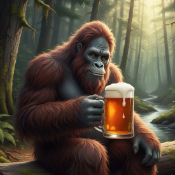Can't answer your question, NorthWind. But if you would like an opinion that may help put things in perspective? Then I'm game I saw some mention that there are no Chimps at that elevation in the region. So:
1) It wouldn't be Chimps. Even if chimps WERE in the region, it still wouldn't be Chimps. Because if it were Chimps, the best anyone could hope for would be 98.9% Human. 99% Human would be an impossibility.
2) Dr. Todd Disotell claimed that the soil samples from under the initial WA State nest discovery showed Human DNA. Degraded Human DNA. In other words, not good enough to show novel primate, but certainly good enough to show Human. Since Humans are in the region in question on this thread, the samples, again, would show 100% Human, even if they, too, were degraded.
It means the 99% Human DNA result needs to be seen in its proper genetic perspective. That is to say, neither Chimp NOR Human. Of course, any other conclusion would be an assumption- although it wouldn't necessarily be an assumption in MY book Hope this helps.


